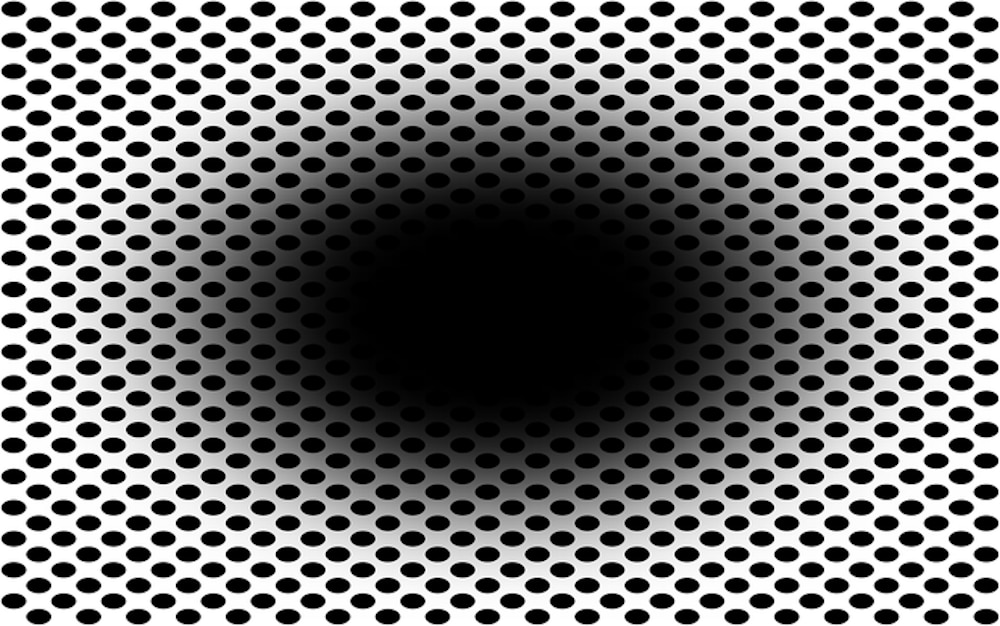Create a free profile to get unlimited access to exclusive videos, sweepstakes, and more!
This dark tunnel illusion tricks your body and your mind
Even our own brains can't be trusted, but that's mostly a good thing.

In the 2000 science fiction film Pitch Black (now streaming on Peacock!), the prisoner Richard B. Riddick, is being escorted on a small spaceship which crash lands on an alien planet. Despite having three suns in the sky, a rare eclipse event bathes the planet in total darkness and the crash survivors find themselves at the mercy of a predatory alien species. Luckily, Riddick has surgically modified eyes which allow him to see clearly in the dark. If you’re going to find yourself on a lightless world with ravenous monsters, it helps to have a superpowered Vin Diesel in your corner.
Here on Earth, we also have a sort of superpower when it comes to seeing in the dark. The pupils in our eyes are capable of opening and closing as needed, depending on the amount of light we perceive. We can, quite literally, adjust our vision in order to match our environment. At least, that’s how we feel about what’s happening.
A new illusion comprised of a dark central hole surrounded by a gradient on a field — pictured above — presents evidence that our eyes aren’t actually reacting to the light in our environment. Bruno Laeng from the Department of Psychology at the University of Oslo, and colleagues, studied the new illusion designed by co-author Akyoshi Kitaoka. They found that looking at it caused most people’s pupils to dilate as if they were entering a darker environment. Their findings were published in the journal Frontiers in Human Neuroscience.
Laeng, the study’s lead author, previously studied another illusion created by Kitaoka which featured what appeared to be a bright light emerging from a gradient. Despite the fact that the center of that illusion is the same color and brightness as the background, its position within the gradient makes it appear and feel as if it is almost painfully bright.
“That led me to study the possibility that our eyes are actually adjusting to the illusions, not to the reality, but to what we think the reality is or is about to be,” Laeng told SYFY WIRE.
What’s striking about this new illusion is that even though it’s a totally static image, it creates a sense of movement toward the center, as if you’re moving into a dark hole or tunnel. It’s that sensation which causes your pupils to dilate. Your brain believes you’re about to enter into a darker environment and prepares your eyes to handle the decreased level of light it expects.
That tells scientists something about how our visual centers work, namely that they are building our picture of the world upon expectations, not upon actual physical stimuli. Ultimately, it’s for the best that our vision centers work this way. If they didn’t, we probably wouldn’t have survived very long. That’s because sometimes the world moves more quickly than our brains can process. It gets around that limitation by making informed estimates about the most likely outcome of events and feeding that information to you as if it already happened. Most of the time your brain’s predictive engines are right and you don’t notice. Illusions, however, mess with our wiring.
“This explains how we can react to events that happen at speeds which exceed the speed of the nervous system. That happens every day. You drive a car, or you play sports, you play tennis or table tennis, how can you do that? By the time the image of the ball hitting the table reaches the part of the brain that controls your planning of movement, it’s already several meters behind you. The solution is to correct by constructing the most probable representation of what the world would be like slightly in the future,” Laeng said.
That’s why 86% of people who look at this illusion have a physiological response and their pupils dilate. Your brain isn’t reacting to the level of light as it exists right now. It’s reacting to what it expects the level of light to be slightly in the future, and it expects the environment to be darker.
The remaining 14% of study participants didn’t have the same reaction, and that’s likely due to the way they process the image in their minds. If you remember the famous black and blue dress (or was it white and gold?) you have an idea of what’s happening here. The way you perceived the dress was dependent on some prior assumptions your brain made about whether it was photographed in full light or in shadow. The same thing might be happening here. Those individuals who don’t get the sensation of moving into a tunnel are making the correct prior assumption that the image is static. The rest of us are fooled by its visual trickery.
“We live in a virtual reality, really. What we see is what our nervous system is creating. Your solid belief in an incontrovertible reality and the reliability of your perceptions is not as it seems,” Laeng said.
If you were fooled by this new illusion, by the dress, or by any number of other illusions you may have encountered in your life, you shouldn’t feel bad. We are all, quite literally, making it up as we go along.


























